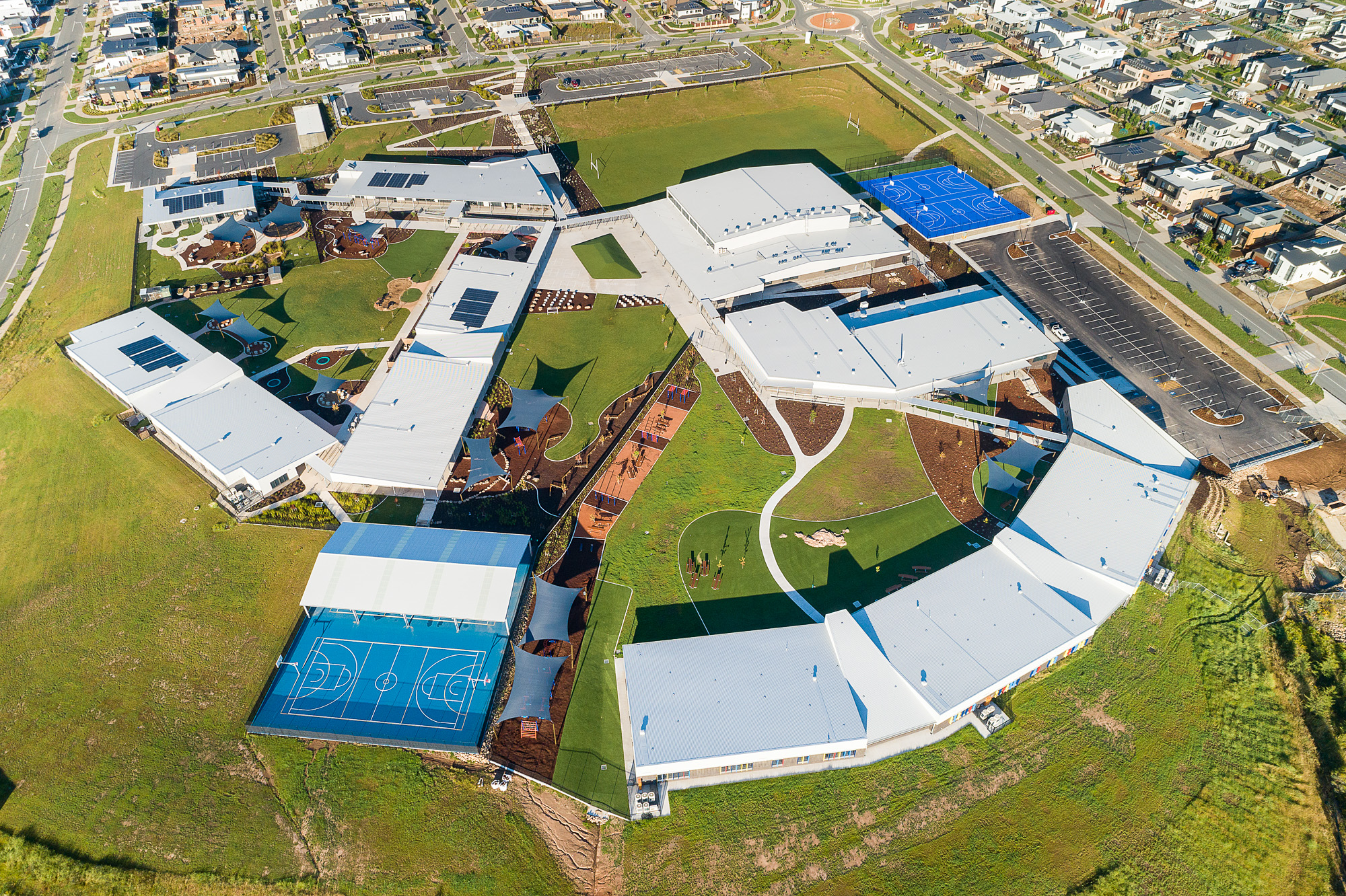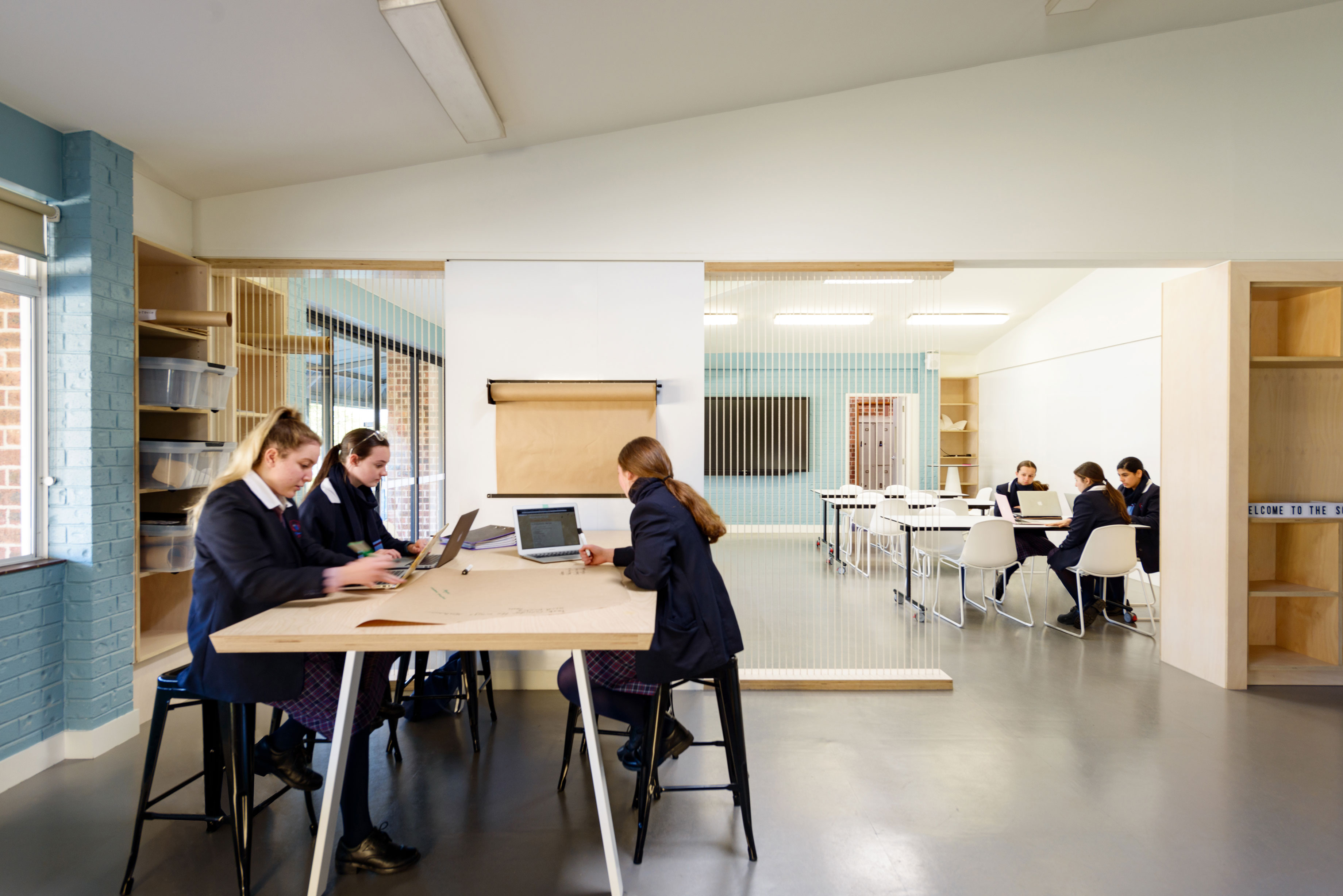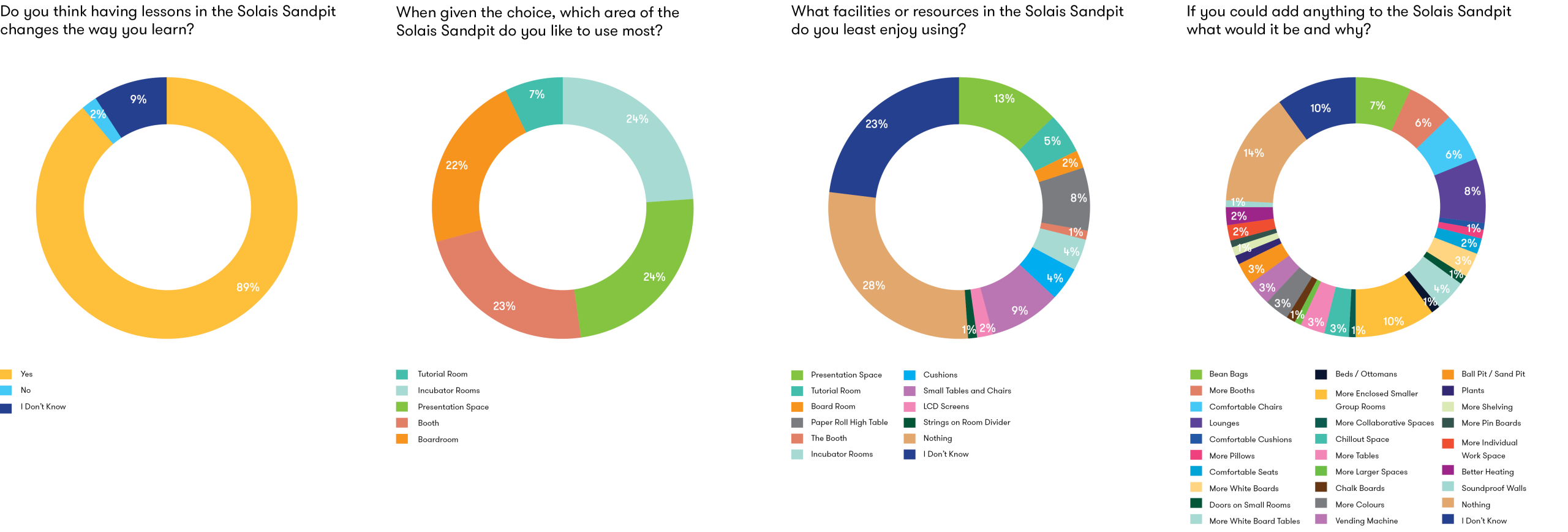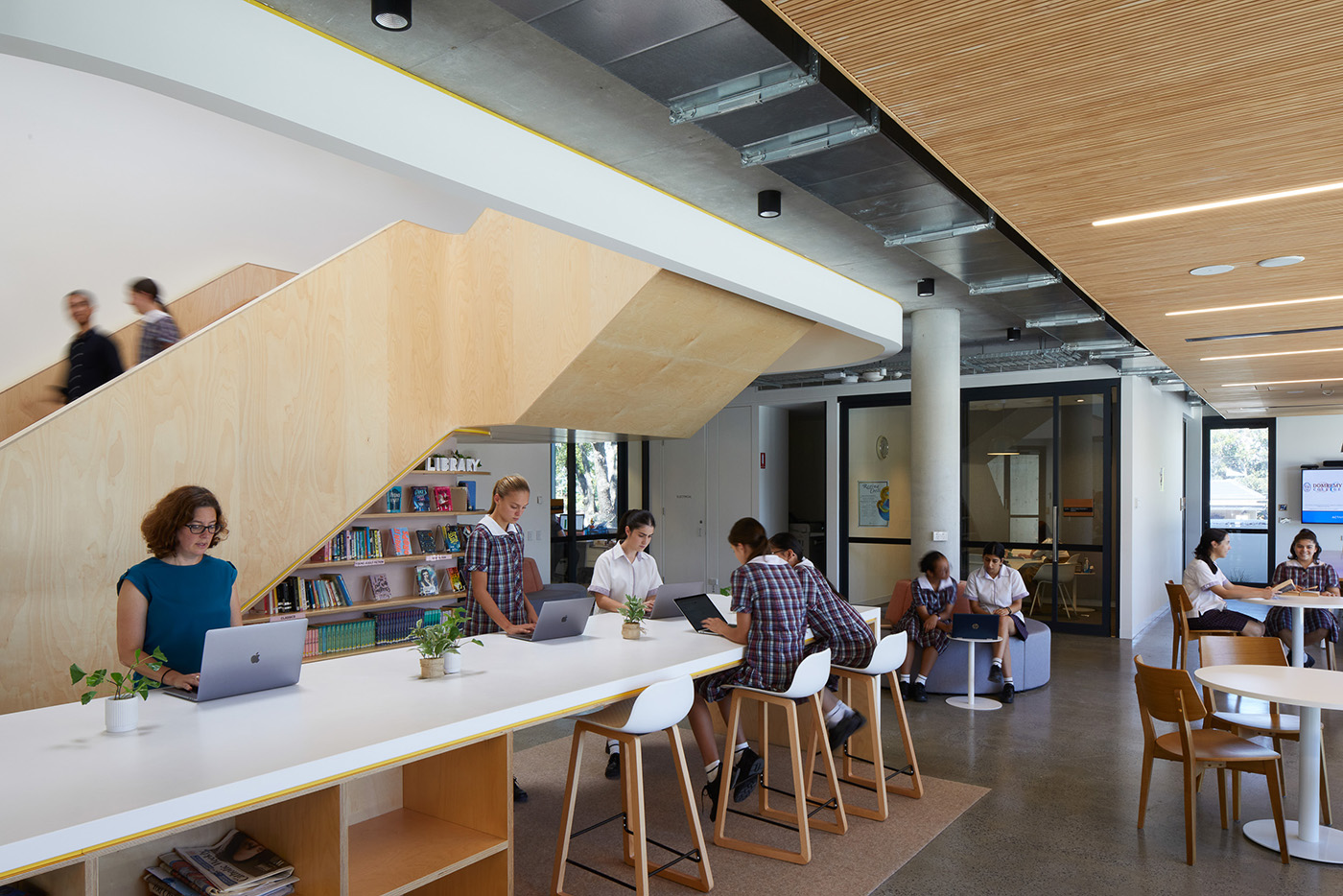Spaces are complex entities. Education spaces even more so, given they must facilitate many teaching and learning structures and experiences, while also catering for diverse user needs. When it comes to education environments, it’s not just a matter of designing a space, but designing with a consideration of how people will interact within it, and how it can nurture innovative learning experiences for students.
An intuitive understanding of space is therefore a key to designing innovative and engaging educational environments. In this context, designers must consider their role working at the intersection of design, research and education, integrating deep sector knowledge and combining this with stakeholder input to achieve spaces that nurture optimum pedagogical experiences for end-users.
What does it mean to ‘understand’ education spaces?
Understanding the nuances of educational spaces means engaging with students, staff and the wider community to discover what they need and desire in an ideal learning environment. Whether it’s more flexible classrooms, a greater variety and volume of learning spaces, more areas to relax, or spaces that allow more connection to the outdoors, end-users understand what kind of environments make them feel comfortable, relaxed and inspired to thrive. It’s therefore our role as designers to engage with them throughout our research and design journey, which must be driven by community consultation, evidence and data.
In an educational context, it’s important to consider spaces as flexible and fluid entities that can be adapted for different purposes, particularly to support interdisciplinary teaching practices and nurture more stimulating and engaging learning experiences. My research over the past decade has allowed me to engage with teachers from schools and (primary, secondary and tertiary) education institutions across Australia and New Zealand, deepening my understanding of what spatial qualities most effectively support collaborative, interdisciplinary and ‘deep’ teaching and learning practices.
Having designed the integrated P-10 campus for Evelyn Scott School (Molonglo, ACT), Hayball continues to work in collaboration with Dr. Dion Tuckwell (Department of Design, Monash University) to support ESS teachers in evolving their practices towards more collaborative teaching and learning outcomes within the school’s innovative learning environments. We are guiding ESS teachers as part of a Professional Learning program that ensures their pedagogy is not only integrated into these diverse and collaborative spaces, but also maximises their full affordances, scope, and possibilities.

Evelyn Scott School, photograph by Ben Wrigley
The role of an ‘affordance’ in designing innovative educational spaces
Learning environment affordances are qualities of the environment (space, objects and people) that facilitate teaching and learning activities and behaviours. For example, if we look at spaces that facilitate ‘deep learning’ (a deeper understanding of content and the ability to apply this to new situations), we observe specific spatial elements that empower students to take autonomy over their own education. A study undertaken across five learning environments in Australia and New Zealand demonstrated that teachers indicated factors including a range of diverse settings to enable different ways to work, the ability to adapt spaces in different ways to support interdisciplinary pedagogies and a range of mobile furniture to enable both seated and standing work as among a series of spatial qualities that promoted deeper and more fulfilling learning experiences for students.
Educators clearly provide essential insights into how optimum learning environments should be designed, offering varying understandings of the possibilities of space dependent on their ability, intention and socio-cultural context around them. But it’s also important to explore the difference in space perception between architects and educators, and the importance of bridging these understandings through extensive communication and engagement in the design process. In doing so, we can ensure elements like varying spatial volumes, open floor space, and display space are integrated into the design of education environments that support deep learning.
I often see architects approach the design of learning spaces by focusing primarily on what to put in them and how to furnish them. This is where a deeper level of understanding must come in, recognising opportunities afforded by minimally furnished spaces to enable ‘floor space’ to afford possibilities for learning and greater flexibility. Architects must work together with education clients and stakeholders in the process of creating learning environments that strike an ideal balance between being visually stimulating, comfortable and functional, as well as anticipate pedagogical experiences.
Exploring the link between learning environment and performance
As designers, we closely observe the link between innovative learning environments (ILEs) and improved educational performance, social connection and community engagement. This means we constantly seek to evaluate – even quantify where possible – the impact of the educational spaces we create on the performance and experience of staff, students and the wider community.
Hayball’s multistage masterplan for Domremy College (Five Dock, NSW) followed a series of Key Planning Principles aimed at achieving more collaborative and interdisciplinary learning environments for staff and students. Winning the 2024 A4LE Planning and Design Project Award (Special Commendation Category), a key element of Hayball’s masterplan was the Solais Sandpit, a prototype space comprising a new Year 7-8 collaborative learning hub and state-of-the-art library to facilitate more engaging student-centred learning experiences.

Domremy College, photograph by Henry Lam
With a dynamic range of spaces including the Learning Commons, a Collaborative Studio, a Tutorial Room and Incubator Rooms, the Solais Sandpit enables a range of pedagogies, education programs and enriching learning experiences focused on both collaboration and student autonomy.
Following the completion of the Solais Sandpit in 2017, students at Domremy College were asked to provide feedback on their learning experiences in the space via a post-occupancy survey, which evaluated the use of functional areas, facilities and resources, education programs and lessons run in the space, and an overall preference of the space over a normal classroom.
The survey results indicated that students found the space inspiring and collaborative, and they enjoyed engaging with its facilities and resources (including the use of whiteboards and LCD screens) to express and share ideas. Students also enjoyed using the space for ‘generic activities’ not related to a particular lesson type. Overall, 89 percent of students surveyed preferred working in the Solais Sandpit compared to a normal classroom. The survey results demonstrate that the Solais Sandpit, as an example of an ILE, nurtures and promotes a range of collaborative and creative learning experiences.

In his PhD thesis Innovative learning environments support deep learning (2020) education researcher Dan Murphy explores a conceptual framework that found “teaching to be an intrinsically spatial practice that manifests in conceptual, physical and cognitive spatial domains.” As a quantitative researcher, Murphy’s work shows a correlation between ILEs and student deep learning. He observed a series of teacher-spatial cognitions that stemmed from “school, pedagogical and classroom environments,” demonstrating that open and flexible learning spaces are indeed more conducive to higher quality learning outcomes.
Changing how we think about space
Design is about change. This model of design thinking that is being increasingly explored by architects and sector experts is based on a user-led approach to education infrastructure centred around a holistic understanding of space.
Understanding space is essential to enhancing the learning experience for students by anticipating pedagogical experiences and supporting staff in delivering innovative education programs. It is the way forward in creating immersive and engaging educational environments with community-wide benefits.
It is our role as architects to act as mediators for clients and stakeholders, sharing our knowledge at the intersection of design, research and education in working to achieve optimum and holistic spaces that support educational experiences.
This article was published in Indesignlive , Architecture&Design and Education Today.
Author: Dr Fiona Young Hayball Principal
Cover photo: Domremy College Nano Nagle by Martin Mischkulnig




